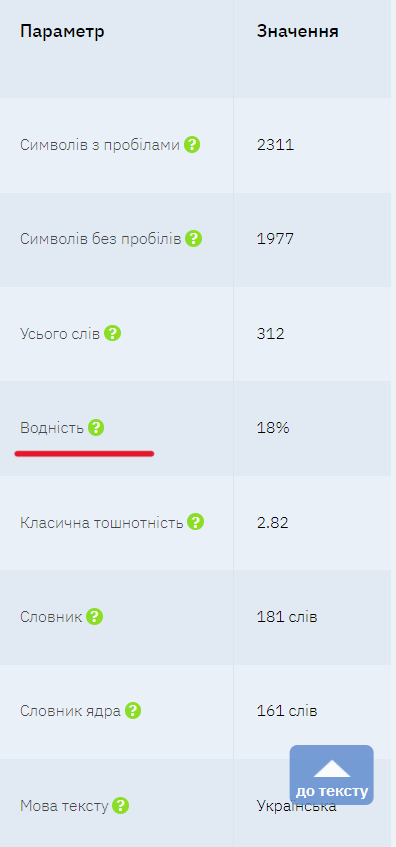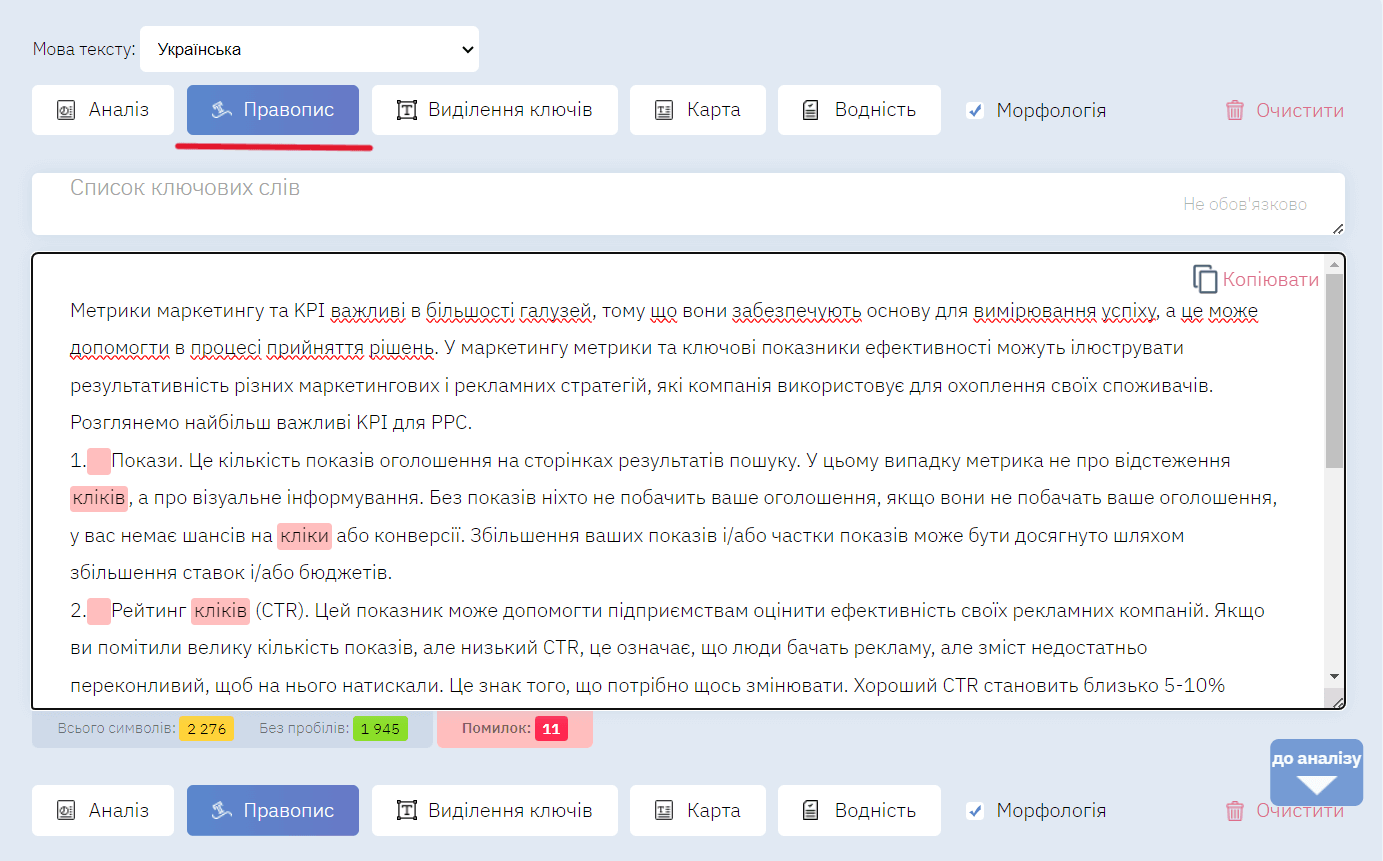Content of the article

Texts are an important and most effective tool, which, when used correctly, can instantly capture the attention of visitors to your resource and keep them on the site longer. That is why they should be written with high quality, because only in this way the user will be able to get all the necessary information to make a decision – leave a comment, order or buy. Any article on the site should not only be full of information, but also meet certain requirements that will help determine whether the text is of high quality or not. It is these requirements, as well as types of texts, that we will consider in our article.
The difference between copywriting and rewriting
Copywriting is the writing of textual content for any form of marketing and advertising, aimed at closing all the questions that people have in the process of making purchases or ordering services on the Internet.
Rewriting is the “rewriting” of any texts (from one or more sources) in other words, but necessarily with preservation of the semantic content.
Copywriter and rewriter: the difference between the concepts is almost imperceptible: both of them write unique texts that you will not see anywhere else.
The main differences between rewriting and copywriting:
- text sources and their number (usually one source is used for rewriting, and at least three for copywriting, or the text is generally written “from the head”);
- SEO copywriting – creating an article with keywords;
- methods of writing texts (selection of synonyms, rearrangement of words in places are uncharacteristic for copywriting);
- speed of execution – it is higher in rewriting (unifying the original text by diluting it with a couple of fresh thoughts is much easier and faster);
- the cost of copywriting is higher (author’s articles are always valued more);
- only in copywriting there is authorship (unique texts can be signed with your name and become famous).
Types of texts on the Internet
Textual content is written for a variety of purposes – from advertisements to advertisements and information about products in large online stores. Therefore, let’s find out what differences exist between them.
Informational article
An informative article is an article written in the third person, where the author does not express his point of view, but presents information based on verified facts. The main purpose of this material is to tell about something, indicate interesting facts or directly answer the user’s questions. Having read it, the reader should get specific information on the issue of interest.
The title of such text should reflect the essence of the article (for example, “How to choose a laptop”). There are no rigid frames in the presentation of the text, you can make small indents so that the text is not too “dry”. The volume of such material is usually more than 2000 zbp (characters without spaces), since it is more difficult to fully reveal the question in a smaller amount. The optimal size is 3000-5000 characters, where there is no room for lyrics and empty sentences. The text should solve a person’s problem, or contain instructions on how to do it.
These infostats are used on informational sites, blogs, and may also contain hidden advertising.
Commercial text
Unlike informational text, the purpose of commercial is to sell!
Or become a trigger for a successful call, ordering a product/service on the website. It contains a UTP (abbr. – a unique selling proposition) and, in addition to the informational part, describes why the best option is to buy from your site, and not from competitors. It also contains the quality characteristics of the service or product being sold.
The title should be bright, visible and attractive to the user. The text should be targeted to the target audience as much as possible and contain sales queries such as “buy”, “order”, “price”, “cost”. The meaning of the final part of the text also changes, which should contain a call to action and convince the user to buy the offered product or service.
Commercial articles are the backbone of any website that sells services or an online store.
PR article
This type of article promotion is used for indirect sales, can describe or recommend a related product or service, have a brand bias. The main task of this content is to increase the loyalty of the target audience, form a quality name for the brand and increase sales. Often, PR articles are grouped into a cycle of articles for constant interaction with the audience.
News article
This type of text content is widely used by information and news sites. The basis is an event in the world, country, city that took place recently or right now. For the most part, such articles belong to social, economic, political, sports topics. Can be used as black PR. They do not always contain true information and may reveal the event one-sidedly or for the benefit of anyone.
Longread
Longread (literally from English “read for a long time”) is a type of article that has a large volume, a narrative form, a full-fledged and high-quality structure, and fully discloses the topic.
Textual content is diluted with multimedia: images, photos and video materials. A literary style can be used in such material. Depending on the depth of processing, the size can be from 10,000 characters or more. The text should contain a meaningful basis and a unique design.
Press release
An information message on behalf of an organization that discloses information, an announcement of an event or an event in the life of the enterprise is called a press release. Often placed on information and news portals, it should contain a small amount of textual content – best of all – 1 page or approximately 2000 zbp. The text should be precise and contain only essential details.
Articles for social networks
These articles can have a different type and purpose of influencing the target audience. These can be news, information, entertainment, and selling articles. There are no set norms, and they must constantly maintain the interest of the target audience. This can also include informing about promotions, discounts, loyalty programs, as well as brand promotion. Social networks should not be neglected, because now people spend a lot of free time on them both from mobile devices and from computers. Text sizes for social networks:
- Facebook – up to 16,000 zbp;
- Instagram, LinkedIn – up to 2000 zbp;
- TikTok – up to 2200 characters;
- Pinterest – up to 500 characters;
- Twitter – up to 200 characters.
Description of goods and services
Such texts provide a high-quality description of the product, as well as its main characteristics, so that the user receives the maximum amount of information about the product that interests him. Otherwise, he can go look for additional data on another site and buy there. The price must also be specified in the information. It is recommended to add a photo or video of the product and user reviews after purchase. The optimal amount of text is from 500 to 2000 characters. Use simple words that are understandable to your target audience.
The description should be:
- Complete and clear so that the potential buyer can have an idea of what the product/service is needed for.
- Include shopping benefits right on your site.
- Provide all quality characteristics such as weight, color, size, functions, benefits and features.
- Be written in a language accessible to the target audience.
- Include links to verified quality assurance resources.
Meta tags – title and description
To some extent, metadata is also textual content that is placed on site pages. They are needed more for search engines to understand exactly what the page is about.
In Title specifies the title of the page. It affects the promotion of the site in search results for keywords. Must contain up to 70 characters. Keywords must be placed in the first 4 words and must not be duplicated.
In the description, you can place information about the advantages of purchasing a product/service when using your resource. Must contain from 70 to 155 characters. Must not duplicate Title or part of the content from the site.
Text quality indicators
Since every day the amount of new content, in particular text, on the network becomes many times greater, search engines prefer unique, useful articles for the user, which maximally reveal his request. Therefore, it is necessary to monitor the quality of the published content. Below we will consider indicators that are important in the SEO analysis of texts.
Why should texts be unique?
The uniqueness of the text on the site is one of the most important factors. If the idea of placing information copied from another Internet resource on your site occurred to you, it will not bring you any results. Because the search engines indexed it on the original site, and the ranking advantage is 100% likely not on your side. Therefore, in order for the site to begin to be ranked normally by search engines, unique content is necessary.
Uniqueness check
In order to check the uniqueness of the text for all types of article promotion, you can use any of the following services:
- https://edubirdie.com/perevirka-na-plagiat – free service for checking uniqueness, works quite quickly;
- https://plagiarisma.net/ – a free service that checks the uniqueness of texts, but only small ones – up to 2000 characters;
- https://plagiarismdetector.net/ – also a free service for checking the uniqueness of texts of up to 1000 words;
- https://advego.com/plagiatus/ – free PC version of online service for checking uniqueness, checks a little slower than other services.
Remember, whatever service you choose, the uniqueness should not be lower than 95%.
Academic nausea
This is the ratio of the number of occurrences of the keyword, including its morphological forms, to the number of words in the text. For example, queries will be considered the same for the words “key, key, key”. You can check academic nausea using the service https://advego.com/antiplagiat/.

A value from 5 to 15% is considered normal.
Wateriness
This is the share of words that do not carry a meaningful load in the text. They include:
- Pronouns – I, myself, mine, such, nobody, something, etc.;
- Conjunctions – and, or, also, etc.;
- Exclamations – ah! phew! hurray! thank you, etc.;
- Prepositions – in, on, before, during, despite, etc.;
- Particles – let, whether, no, here and others;
- Abbreviation;
- Address (Dear Sirs, Ladies and Gentlemen);
- Introductory words (it seems, perhaps, possible).
- And also, all possible verbal turns that “decorate” the texts.
The acceptable indicator is 50-70%. This parameter can also be checked using services https://advego.com/antiplagiat/ (Fig. 1) or https://istio.com/ (Fig. 2).

Fig.2

Fig.2
Wateriness affects the quality and usefulness of the text, so it is not recommended to go beyond the established limits. If the value is below the norm, this indicates the presence of verbal garbage that should be eliminated.
Oversleep
Re-optimization in SEO promotion is the proportion of the most frequent keyword to the total number of words in the article. In the case of excessive availability, it can lead not only to poorer rankings, but also to uncomfortable reading. Instead of showing how valuable a service/product is, all the attention of users will be taken by search queries, due to which, most likely, the site will be closed and not read to the end.
The frequency of the most used word should be up to 3.5%.
Spelling and punctuation
The ability to correctly express thoughts in writing is one of the main ways to write a quality article. Therefore, spelling and punctuation are the main tools used by the best copywriters and journalists. If you put together all the words in the topic without punctuation marks, the text turns into a set of words and phrases. And the presence of spelling errors can cause the user to leave the selling page without making a conversion on the site.
You can check this indicator either with the help of Microsoft Word, when you write text, the program indicates errors, or with the help of the service https://istio.com/uk/text/analyz.

LSI phrases
These are semantically related words that help make the text most relevant to user requests. They can appear to users in a search along with a keyword. By using them when writing an article, you will avoid repetition of words, and the text will become more meaningful. Search engines widely use them in their algorithms, because not only high-frequency and medium-frequency queries, but also low-frequency queries with tails will be relevant for ranking.
Text structure
Using a high-quality text structure when writing allows you to expand the topic, use more keywords, get rid of spam, and also add some wateriness. To create a quality article, it is recommended to think over its structure first, and only then start writing. It is also necessary for the convenience and improvement of reading. It is necessary to use h2-h4 headings in articles, as well as add bullet lists so that the text does not visually seem like a sheet. In addition, it is recommended to use paragraphs to separate the text.
Recommendations for writing SEO texts
Writing effective and high-quality sales copy is a complex process that requires attention. It is not just about writing some text for keywords, which corresponds to the main indicators of SEO analysis, but is aimed at the user’s search interests for specific queries.
How to write quality SEO text? To do this, you need to do the following:
1.Determine the volume of the required text based on competitor and niche analysis;
2. Prepare a list of basic and additional words, which it is desirable to use when writing the text;
3. Create technical tasks for copywriters, where the following parameters will be described:
- what you need to write a text about (indicating the order of submitting the content, its content and the size of certain blocks);
- questions that need to be disclosed according to the specifics of the service/goods provided – questions to the customer, without answers to which the copywriter will not be able to write an effective and high-quality text;
- search queries for which it is planned to promote the page, as well as the frequency of their use in the text;
- additional words that determine the subject (LSI-words);
- examples of good texts from the top, regarding the necessary topic in the context of writing a specific text;
4. Check the finished text according to the technical task and additions, if necessary;
5. Enter headings H1-H6 and other optimization elements;
6. Check and finalize the structure of the page (if necessary) so that the text not only meets all SEO requirements, but is also easy to read and interesting for users.
If you follow all the recommendations, your article will have a high-quality look and answer the main requests of users. But in addition, do not forget about adding different types of content. Using high-quality audio, video and photo content will inevitably improve the amount of time a user spends on your page.
It is recommended to describe your thoughts succinctly and not to make sentences too long. This will ensure the user’s convenience while reading. Keys should be legible and evenly spaced across the text.
To summarize
Writing text for a website is a long, complex process that requires a lot of attention. The correct and usually good text is the one that was created by a team: the customer, an SEO specialist and a copywriter. In the article, we told you how to write an excellent text that will appear in a high position in the search engine and be well received by users. The main thing is to remember that you need to write for people: in detail, interestingly and professionally, then your success is guaranteed!





 30/10/2023
30/10/2023  2621
2621


